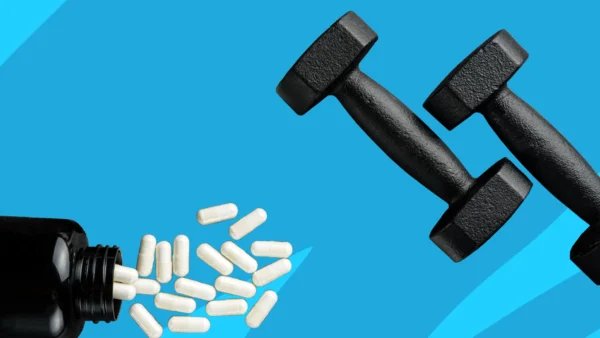Vitamin D is essential for keeping bones strong. This nutrient also contributes to healthy immune systems, muscle movement, and nerve function. Still, nearly 1 in 4 Americans experiences vitamin D deficiency. Though vitamin D can be increased through diet and sun exposure, some people need to take daily vitamin D supplements to correct low levels of this essential nutrient.
How long it takes to correct a vitamin D deficiency depends on the dosage, plus the reason for and severity of the deficiency. Here’s what you need to know if you’re wondering, “How soon will I feel better after taking vitamin D?”
How long does it take for vitamin D to work?
It can take anywhere from four weeks to four months of daily vitamin D supplements to notice a difference, says Jamie Lee McIntyre, RDN, a nutrition communications consultant based in Florida.
Many factors affect the efficiency and efficacy of supplements. For instance, vitamin D3 supplements generally boost vitamin D levels faster than vitamin D2 supplements. Research suggests BMI and calcium intake affect how long it takes for vitamin D supplements to work. Gut-related conditions such as celiac and Crohn’s disease can also cause malabsorption of vitamin D.
“Most studies agree that the more depleted a person is of vitamin D, the longer it will take for supplementation to help,” adds Kimberley Wiemann, RDN, the director of dining at Morrison Living in New York.
Bottom line: Our experts say vitamin D supplements are not a quick fix for a deficiency. It can take weeks, or even months, to notice changes in your health.
How do I know vitamin D is working?
The only definitive way to know vitamin D dietary supplements are working is to have a blood test, says Meredith Warner, MD, an orthopedic surgeon and founder of Well Theory. In most vitamin D blood levels tests, providers will measure the concentration of 25-hydroxyvitamin d—25(OH)D—a major form of vitamin D used to make “active” vitamin D.
“This is the standard to measure the availability of D3 in your system,” Dr. Warner says. “If the levels don’t move, then perhaps more supplementations will be necessary.”
All of our medical experts also say most patients know they’re feeling the effects of vitamin D when they feel better and healthier. It’s a sign that the supplements are working if vitamin D deficiency symptoms, such as fatigue, weakness, and joint pain, start to disappear. As Dr. Warner puts it: “Having the appropriate levels makes everything work better, and most people have a sense of ‘wellness.”
Of course, it’s important to remember that supplements take time to work. “Continue with your prescribed vitamin D protocol even if you do not feel a difference within the first few days or weeks,” McIntyre says.
Vitamin D health benefits
Like other essential nutrients, vitamin D benefits the body in many ways, including aiding in bone and muscle health, helping with mood regulation, and playing a role in the immune system response.
Bone health: The most known and proven benefit of vitamin D is good bone health. According to the National Institutes of Health, getting the recommended amounts of vitamin D and calcium helps keep bones healthy, prevents osteoporosis, and slightly increases bone strength in older adults.
Muscle health: Vitamin D also benefits muscle health. Research shows that vitamin D plays a role in muscle regeneration, essential for muscle recovery after exercise or other physical activity.
Mood regulation: There’s some evidence that vitamin D helps with mood regulation. Researchers have found a link between depression and vitamin D deficiency, though that doesn’t mean vitamins can be used as a substitute for prescription medications for depression. Research is ongoing, but this vitamin does seem to have mental health perks.
Immune system response: Finally, vitamin D plays a key role in the body’s immune response, reducing inflammation and increasing the activity of white blood cells. Low levels of vitamin D can impede the immune system, but that does not necessarily mean taking more vitamin D is always better.
Our experts warn that over-supplementation is possible. A healthcare provider should always be consulted before adding a daily vitamin like this.
RELATED: Can you overdose on vitamin D?
Symptoms of low vitamin D
Vitamin D deficiency can be very serious, though vitamin D levels that dip just below normal might not cause symptoms. Because exposure to sunlight is one of the three ways to get vitamin D, some people have lower levels in winter, when the days get shorter.
“Vitamin D has effects on nearly all tissues in the body,” says Dr. Warner. Being deficient in this essential nutrient can cause a variety of issues. Symptoms of low vitamin D levels include:
- Fatigue
- Weakness
- Bone and joint pain
- Muscle pain
- Feeling more moody, down, or depressed
In children, vitamin D deficiency can cause rickets, which causes bones to soften and weaken.
Who is at risk for vitamin D deficiency?
Some people have more risk factors for experiencing vitamin D deficiency. Healthcare providers might recommend supplements as a preventive measure against severe vitamin D deficiency.
People in one or more of these categories have more risk factors for vitamin D deficiency:
- Older adults: As we age, our skin becomes less effective at making vitamin D from sunlight, and our kidneys are not as good at creating the active form of vitamin D.
- Breastfed infants: Human breast milk contains very little vitamin D, according to the Centers for Disease Control and Prevention. Thus, it is recommended that breastfed babies be given 400 IU of daily vitamin D.
- People who get little to no sun exposure: Those who stay indoors, cover their entire body when outside, or live in an area with little sunlight are unlikely to get vitamin D from the sun.
- People with darker skin: High amounts of skin pigmentation impede vitamin D production from sunlight.
- People with gut conditions: Celiac disease, Crohn’s disease, and other gastrointestinal conditions make absorbing vitamin D from food and supplements more difficult.
- Pregnant people: Some women have a high risk of vitamin D deficiency during pregnancy. Many doctors recommend a daily multivitamin while pregnant.
- People with certain health conditions: Those with kidney disease or liver disease have a heightened risk of vitamin D deficiency.
- People who take certain medications: Some prescription medications can impede the absorption of vitamin D. Talk to your healthcare provider if you are concerned about a medication causing vitamin D deficiency.
Ways to increase vitamin D levels
There are three ways to make sure you’re getting enough vitamin D: sunlight, diet, and supplements. None of these raise vitamin D levels immediately, so talk to a healthcare provider if you are concerned about a suspected or ongoing deficiency.
1. Diet
“It is possible to increase D levels with diet alone,” Dr. Warner says. However, our experts warn that this would require consuming a lot of fish liver oils and fatty fish like sardines and mackerel. The following foods are high in vitamin D:
- Freshwater rainbow trout
- Salmon
- Canned light tuna
- Fortified orange juice or milk
- Mushrooms
Egg yolks and beef liver are also good sources of vitamin D. The trouble is that raising levels through these foods alone could lead to large, monotonous portions of animal products—good for vitamin D levels but not great for a balanced diet and overall health.
Finally, Wiemann says it’s important to remember that vitamin D is fat-soluble which is why many dairy products are fortified with vitamin D. “These foods are best consumed with a healthy fat source in order to help absorption in the digestive system,” she explains.
2. Sun exposure
Exposing skin to UV light from the sun can boost vitamin D. That’s why it is often called the “sunshine vitamin.” However, it can be difficult to get enough time in the sun while protecting skin from harmful UV rays.
“Lighter pigmented skin requires 20-30 minutes daily; darker pigmented skin requires up to 60 minutes daily,” Dr. Warner says. However, sunscreen can lower vitamin D absorption by up to 90%.
The National Institutes of Health suggests striking a balance by spending just five to 30 minutes in the sun at least twice a week without sunscreen.
3. Supplements
Of course, vitamin D supplements can also boost levels. Our experts suggest that anyone interested in supplements check with their healthcare provider first because it is possible to over-supplement. Supplements don’t require a prescription, but that doesn’t mean they can’t cause unpleasant side effects.
“This is a fat-soluble vitamin, so taking too much can build up to toxic levels in your blood,” Wiemann says. Possible side effects of too much vitamin D include:
- Bone pain
- High calcium levels in the blood
- Nausea
- Vomiting
- Frequent thirst and urination
- Kidney stones
- Unintended weight loss
- Confusion
While toxicity is a concern, Warner says deficiency is more likely.
Always seek medical advice from a healthcare provider or pharmacist before you take vitamin D or any new supplement, even those available over the counter. A healthcare provider can offer suggestions for quality supplements, consult about interactions with other medications you are taking, and recommend a dose of vitamin D.











